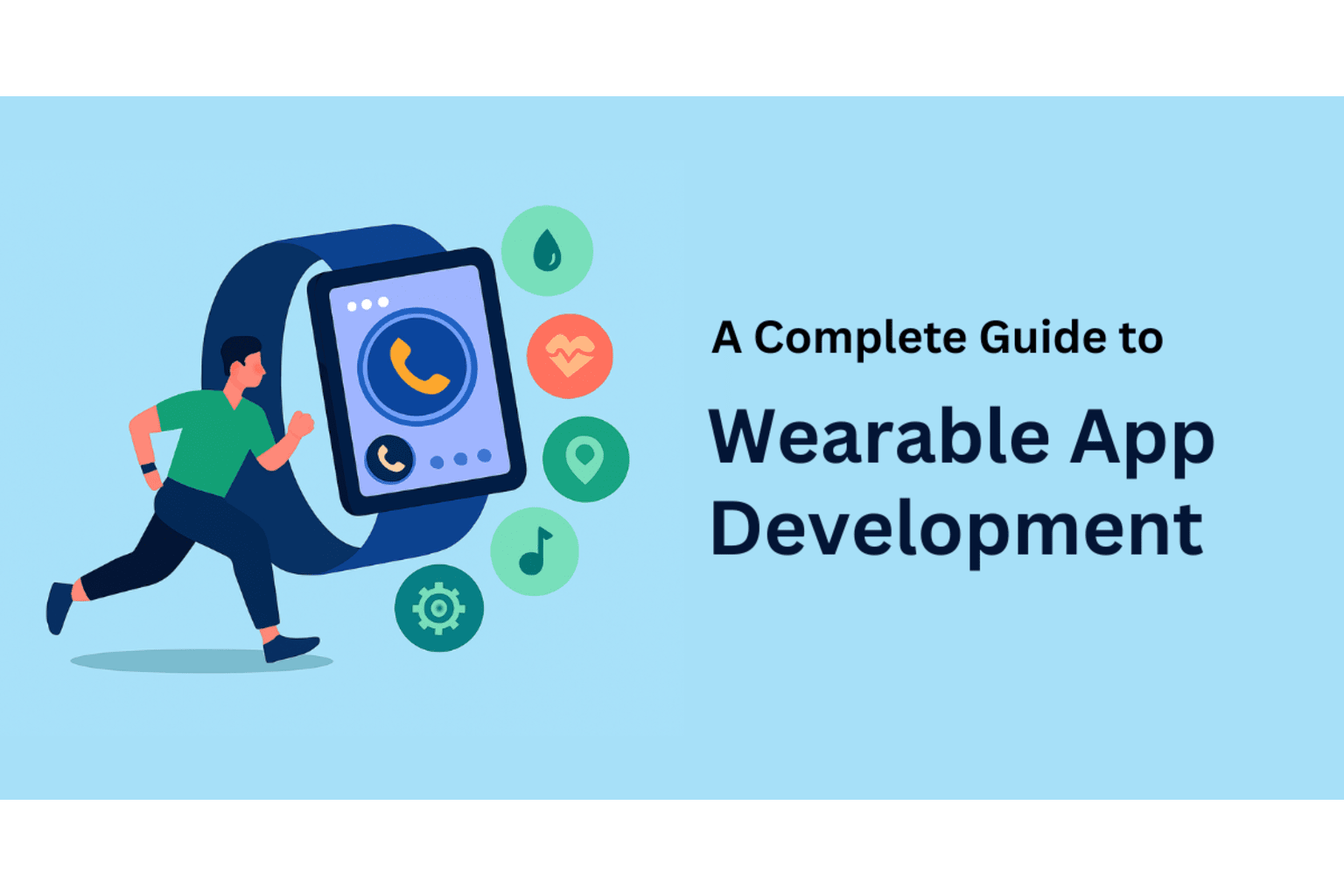Having your steps validated on a smartwatch, water reminder, or sleep monitoring through a fitness band has become second nature for all of us. Wearables are not just fashion items anymore; they are habit enablers that function quietly behind the scenes.
The magic is actually applications that empower these devices. Socializing, personalizing, and making them simple-to-use tools, wearable app development socializes, personalizes, and empowers them. And here in this blog post, let me guide you through wearable apps, why they are simple, how they are made, and where technology is headed.
What is Wearable App Development?
Wearable app development is used to denote the process of app developing and designing, i.e., for wearables such as smartwatches, industry medical wearables, AR glasses, and fitness wearables. Wearable apps are created with the ability to interact with direct hardware sensor access, user feedback requested, and quick interaction.
Application development will be done keeping in mind limitations of wearables such as limited screen real estate, power management, and sensor-activated capability. Synchronization of mobile phones and cloud environments will also be controlled by app developers.
Types of Wearable Apps
Wearables have penetrated every segment. The most usual types of applications designed for them are as follows:
- Health and Fitness Apps: Track steps, calories, sleep, and heart rate and provide actionable health guidance.
- Smartwatch Apps: Recycle existing smartphone ability into a watch-worn app, i.e., messaging, music, or instant alert.
- Medical Wearable App: Used for the tracking of hospital and clinic patients for telemedicine, disease control, and support for diagnostics.
- Lifestyle and Productivity Apps: Smart glasses and smartwatches to take notes, navigate, or voice control for increased productivity.
- Games and Fun Apps: Interactive experience or play through augmented reality on wearables like smart glasses.
Benefits of Wearable App Development
There are very few benefits of wearable technology to end users as well as businesses. Few of the prominent benefits are:
- Real-Time Monitoring Data: The customers can track real-time health, fitness, and productivity data.
- Increased Engagement: Wear apps are replayed, because they will offer real-time as well as personalized feedback of information.
- Enlarged Health Outcomes: Doctor-readable patient data with remotely integrated wearables health applications.
- Enlarged User Experience: Unencumbered wearables connectivity to phone to eliminate user friction.
- Business Opportunities: Business solutions business opportunities for business enterprises in emerging economies in healthcare, fitness, lifestyle, and business.
Industries Leveraging Wearable App Development
Other industries have accessed app wearables to maximize pain relief and services:
- Healthcare: Preventive care, telehealth, and chronic care management.
- Sports and Fitness: Real-time monitoring of trainers and players.
- Retail: Improved shopping and shopping with hands-free.
- Manufacturing: Monitoring productivity of workers, safety checks, and training with wearable technology.
- Corporate: Wellness programs, productivity, and stress management.
Wearable App Key Features
In developing wearables apps, there are some features which are of fundamental nature:
- Seamless Smartphone Integration: Wearables must be seamless with co-located smartphone apps.
- Personalized Notifications: Easy-to-read notifications like health reminders, fitness achievements, or calendar invitations.
- Battery Sparing: Code executing at absolute bare minimum to make the most of battery life.
- Ease-of-Use Interface: Usability-conformant and legible interfaces for small screens.
Process of Wearable App Development: Step-by-Step Guide
It is not coding to create a wear app. Planning, design, testing, and ongoing refinement will come next. Below is the step-by-step guide that can assist in giving you guidance through each and every step.
1. Define Purpose and Audience
Start with the problem your wearable app will solve and who will be wearing it. Keep the starting scope small. A clear, plain English purpose makes it easier and avoids overreaching.
2. Conduct User Research and Select the Best Platform
Requires user research, rival apps, and market trends. Make the decision to code for, say, Wear OS, watchOS, or custom hardware. Make the decision whether the wearables app should have a companion mobile app that it synchronizes onto in order to provide a better experience.
They outsource if they don't have enough in-house capability, and they most likely hire top Atlanta app developers or elsewhere to get it and have it up and running.
3. Small Screen Design and Instant Access
Wearables have to display information in less than a second. Try to keep designs clean, huge touch targets, and use gestures, haptics, or voice whenever the context requires it. Simple to use and simple to use on the move.
4. Display Sensors, Performance, and Battery separately
Wearables are activity-based steps, heart rate, or GPS location. Preserve light and sensor-friendly background activities. Preserve power because users download power-guzzling apps when active.
5. Security and Privacy
Wearable apps don't utilize more than health or personal information. Lock such information with strong storage, encryption, and open privacy standards. Credibility and regulatory compliance such as GDPR or HIPAA is needed.
6. Test, Ship, and Refine Daily
Test on actual hardware, rather than emulators, to try and test battery life, usability, and connectivity. Check performance at release and gather feedback from consumers. Give consistent updates to patch bugs, add new features, and achieve hardware-compatibility.
The Future of Wearable App Development
There is even more yet to come with technology continuing to advance to effect the changes for the best. AI in healthcare diagnosis, artificial intelligence in all IoT devices, and AR tech are just the beginning. Wearables themselves have applications beyond tracking into pre-approving suggestions, interactive learning programs, and increased data privacy.
With 5G now having arrived, wearables' apps will be fast and not slow, and therefore experience in real time will be offered to a greater degree. Any company currently functioning in delivering apps for wearables is definitely going to be the future leader.
👉Interesting Read: The Cost of Artificial Intelligence in Healthcare
Conclusion
Wearable technology started in niches, to the mass phenomenon of our online existence. Wellness and health, work and play, wearable app development is changing people's routines and lives. There are huge opportunities for consumers who enjoy the convenience of a personalized experience and businesses that place their chips on this technology.
If you need a new kind of user interaction, wearable apps can be a game changer. The key lies in focusing on usability, integration, and real value creation.
FAQs
1. How much will a wearable app cost?
It depends on the platform, the complexity, and the level of functionality. A minimum app is in the few thousands of dollars range, and a gorgeous health or AR app is in the hundreds of thousands of dollars.
2. What are some examples of wearable applications?
They include AR glasses experience apps, sport, productivity, and Apple Watch health apps, among others.
3. What are some of the challenges encountered when creating wearable applications?
Some of them are battery optimizations, screen size limitations, data protection, and user-centered design of the interfaces.

